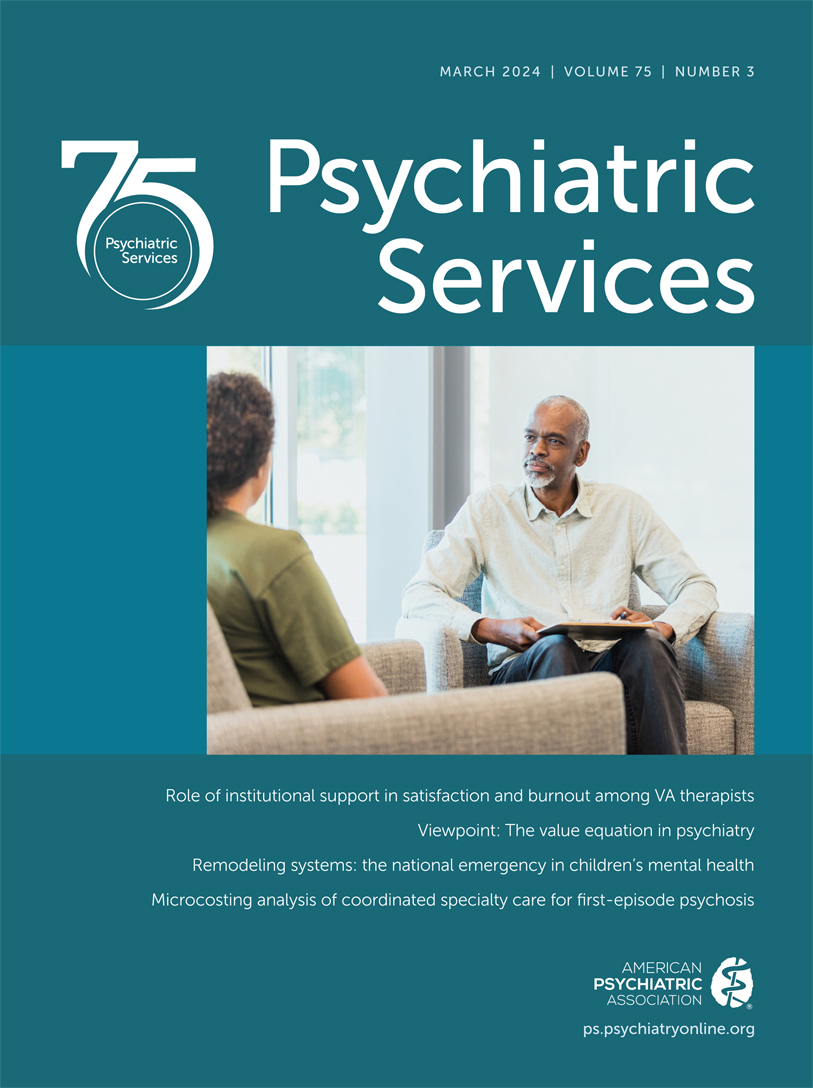Patient Engagement in and Adaptations to Delivery of Outpatient Care for Opioid Use Disorder During the COVID-19 Pandemic
Abstract
Objective:
The authors investigated adaptations to outpatient care delivery and changes in treatment demand and engagement among patients receiving medications for opioid use disorder (MOUD) in the months after the declaration of the COVID-19 public health emergency in 2020.
Methods:
Data were collected through an online survey (June–November 2020) of outpatient MOUD prescribers. The survey obtained information on outpatient practices’ adaptations to MOUD treatment and urine drug screening (UDS) and elicited provider views on the effects of the COVID-19 pandemic on patient demand for, and engagement in, treatment. Multivariable regression analyses were used to examine associations among practice characteristics, patient engagement, and service adaptations.
Results:
Of 516 respondents, 74% reported adaptations to MOUD delivery during the pandemic. Most respondents implemented virtual visits for initial (67%) and follow-up (77%) contacts. Prescribers of buprenorphine were more likely than those who did not prescribe the medication to report MOUD adaptations. Among respondents reporting any MOUD adaptation, 77% made adaptations to their UDS practices. Among 513 respondents who answered COVID-19–related questions, 89% reported that the pandemic had affected the treatment and engagement of their patients. Of these respondents, 30% reported increased difficulty with patient engagement, and 45% reported that their patients preferred virtual visits during this period, whereas 18% endorsed patient preference for in-person visits.
Conclusions:
Telehealth and federal regulatory easements in response to the COVID-19 pandemic enabled providers to continue treating patients for opioid use disorder in 2020. The results suggest that care adaptations and changes in patient demand and engagement were common in the practices surveyed.
Access content
To read the fulltext, please use one of the options below to sign in or purchase access.- Personal login
- Institutional Login
- Sign in via OpenAthens
- Register for access
-
Please login/register if you wish to pair your device and check access availability.
Not a subscriber?
PsychiatryOnline subscription options offer access to the DSM-5 library, books, journals, CME, and patient resources. This all-in-one virtual library provides psychiatrists and mental health professionals with key resources for diagnosis, treatment, research, and professional development.
Need more help? PsychiatryOnline Customer Service may be reached by emailing [email protected] or by calling 800-368-5777 (in the U.S.) or 703-907-7322 (outside the U.S.).



